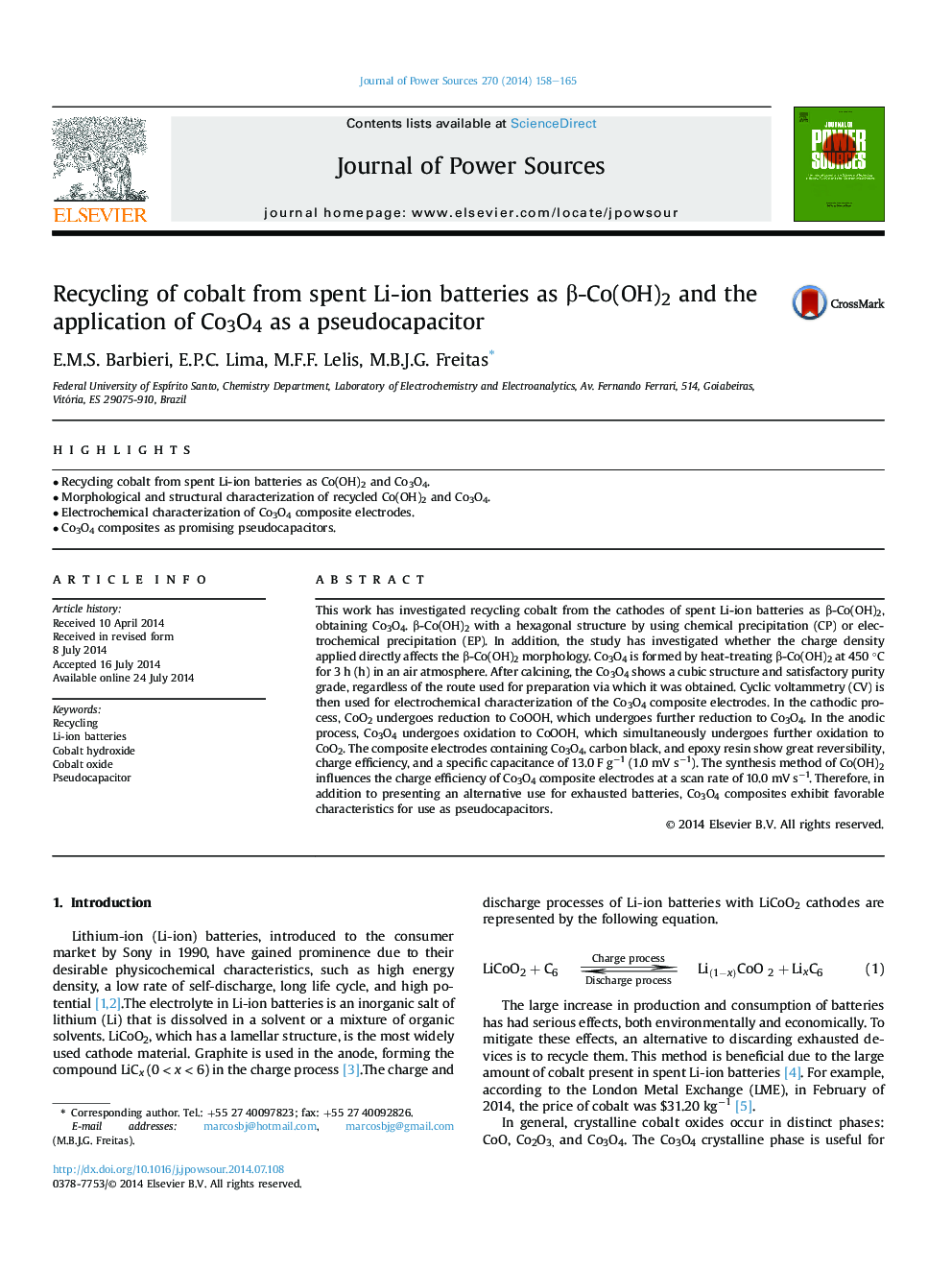| کد مقاله | کد نشریه | سال انتشار | مقاله انگلیسی | نسخه تمام متن |
|---|---|---|---|---|
| 7736061 | 1497962 | 2014 | 8 صفحه PDF | دانلود رایگان |
عنوان انگلیسی مقاله ISI
Recycling of cobalt from spent Li-ion batteries as β-Co(OH)2 and the application of Co3O4 as a pseudocapacitor
دانلود مقاله + سفارش ترجمه
دانلود مقاله ISI انگلیسی
رایگان برای ایرانیان
کلمات کلیدی
موضوعات مرتبط
مهندسی و علوم پایه
شیمی
الکتروشیمی
پیش نمایش صفحه اول مقاله

چکیده انگلیسی
This work has investigated recycling cobalt from the cathodes of spent Li-ion batteries as β-Co(OH)2, obtaining Co3O4. β-Co(OH)2 with a hexagonal structure by using chemical precipitation (CP) or electrochemical precipitation (EP). In addition, the study has investigated whether the charge density applied directly affects the β-Co(OH)2 morphology. Co3O4 is formed by heat-treating β-Co(OH)2 at 450 °C for 3 h (h) in an air atmosphere. After calcining, the Co3O4 shows a cubic structure and satisfactory purity grade, regardless of the route used for preparation via which it was obtained. Cyclic voltammetry (CV) is then used for electrochemical characterization of the Co3O4 composite electrodes. In the cathodic process, CoO2 undergoes reduction to CoOOH, which undergoes further reduction to Co3O4. In the anodic process, Co3O4 undergoes oxidation to CoOOH, which simultaneously undergoes further oxidation to CoO2. The composite electrodes containing Co3O4, carbon black, and epoxy resin show great reversibility, charge efficiency, and a specific capacitance of 13.0 F gâ1 (1.0 mV sâ1). The synthesis method of Co(OH)2 influences the charge efficiency of Co3O4 composite electrodes at a scan rate of 10.0 mV sâ1. Therefore, in addition to presenting an alternative use for exhausted batteries, Co3O4 composites exhibit favorable characteristics for use as pseudocapacitors.
ناشر
Database: Elsevier - ScienceDirect (ساینس دایرکت)
Journal: Journal of Power Sources - Volume 270, 15 December 2014, Pages 158-165
Journal: Journal of Power Sources - Volume 270, 15 December 2014, Pages 158-165
نویسندگان
E.M.S. Barbieri, E.P.C. Lima, M.F.F. Lelis, M.B.J.G. Freitas,